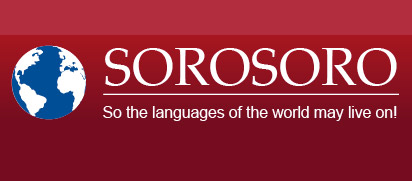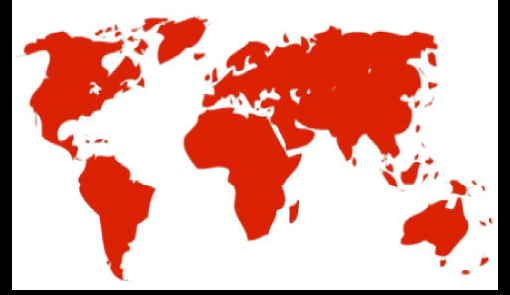Print  |
|


Geviya
Page created by Lolke van der Veen, 2010. Professor in Linguistics at the University of Lumière-Lyon 2, full member of the DDL – Language Dynamics – laboratory (UMR 5596).
Data on Geviya
Alternative names:
Gevia (spelling rejected by the Eviya), Avia (19th century), Ivéa.
Dialects & Variants:
A few variations have been observed between the last speakers of the language, especially in regards to melodic profiles. Variations are probably due to the fact that these speakers are multilingual (other spoken languages affect Geviya unevenly, from one speaker to another) and that their language is disintegrated.
Classification:
Niger-congo, Bantu, B30
Geviya is a Bantu language (Northwest Bantu) referenced B301 according to the Maho classification (2003).
Area:
Geviya is spoken in the central part of Gabon, in one single village located on the right bank of the Ngounié river, opposite the city – prefecture – of Fougamou. Some traces of former villages remain, located out in the bush, east of today’s village. Other speakers of the language now live scattered over large urban centers, Libreville especially.
Number of speakers:
The number of Eviya (the speakers of Geviya) is estimated around 400. Because they live on national ground, obtaining precise figures is difficult. In the official censuses led by the Gabonese government, the Eviya are consistently grouped (confused?) with other communities. However, linguists believe that the number of fluent speakers does not exceed approximately twenty.
Language status:
Despite a national language status, like every other indigenous language in Gabon, Geviya nowadays is severely threatened with extinction. It can be viewed as another significantly moribund minority language.
Vitality & Transmission:
Cross-generational transmission is under process of interruption. The children are still taught the language (passive command) but they usually answer in French when addressed by the older generations. Children communicate in French, the language they learn and use in school. This shows an unequal form of bilingualism. A rise in interest towards the language has been observed since the publication of a Geviya/French dictionary in 2002 (see bibliography below), though it would be wrong to consider this could reverse the trend, in today’s context of globalization and economy crisis.
Media, Diffusion, Education:
No one uses Geviya outside its speakers. It is relatively unknown in Gabon, where vernaculars are left out of the education system. Yet, since 2003, the Eviya have their own dictionary (ca. 6,600 entries) thanks to a 15 years-long collaboration between Lolke van der Veen, Sébastien Bodinga-bwa-Bodinga and Moïse Modandi wa-Komba (see references). This initiative was launched by Sébastien Bodinga-bwa-Bodinga who realized in the 1980s that his language was under threat. From then on, he began to collect vocabulary, statement samples, proverbs, narratives, elements of pharmacopeia, etc. Once his record was completed, he brought in Lolke van der Veen and his nephew Moïse Modandi wa-Komba to help checking, completing and finishing this gigantic project.
Historical & ethnographic observations
Explorer Paul Du Chaillu visited the Eviya during his first expedition in Gabon (between 1857 and 1859) and briefly commented their housing customs. He also described Eugénie de Montijo’s waterfalls, located close to their village. According to the Eviya, the waterfalls are home to a couple of genies and their child, outstanding blacksmiths.
According to migration narratives, the Eviya came from the Ogooué-Ivindo regio (northeastern Gabon) along with their brothers the Mitsogo, Apindji, Okandé, Pové, and Himba. They are said to have settled in the current area following a long stay somewhere near the sea. Reasons for this shift may be found in the threats of slavery, symbolically represented in the narratives by an enormous and frightening eagle flying down to grab people in its claws and take them away.
The Eviya have several initiation rituals, among which the Mogesi a Eviya. The term mogesi means “genie”. The practice of such rituals involves secret societies. These can be either masculine, feminine, or mixed.
Sociolinguistic observations
The Eviya all speak at least two indigenous languages: theirs and Eshira (Bantu B41). Many also speak Getsogo (Bantu B31), very close to Geviya. Most of them also speak fluent French. Geviya is only spoken at the village: if outside the village, it is only spoken within the family sphere or among members of the community, incidentally with a growing discretion especially in the presence of people who do not speak the language.
Linguistic observations
As early as in 1987, linguist Jean Alain Blanchon described Geviya as a blend. Further research (Van der Veen 2003) showed that Geviya fundamentally belongs to the B30 language group (Tsogo group), although it did borrow a consistent part of its vocabulary to Eshira (or Gisir; B41), spoken on the opposite bank, and at this point in time, better maintained than Geviya. Eshira and Eviya marriages are frequent.
A few words in Geviya
- A proverb straight to the point:
Ìmá à tɔ̀ndɔ́ mbùà, tɔ̀ndɔ̀ ná góné mìnɛ̀kà myèndì.
Translation: If you like a dog, you’ll have to like its fleas.
Meaning: If you marry (lit. like, want) a woman, you also have to handle (lit. like, want) her parents. This proverb is delivered on the occasion of a marriage proposal, and directed towards the possible groom by the bride’s uncle (the Eviya system is matrilineal).
- Eviya motto:
Nà ndè mòvìyá Ngɔ̀lɛ̀ kɛ̀mbɛ̀lɛ̀ kɛ̀mbɛ̀lɛ̀ mìnó gà èpà.
Translation: I’m an authentic Eviya (Moviya), in flesh and blood (literally “my white teeth as dazzling as bones”).
The name Ngɔlɛ refers to the group’s mythical Mother.
Bibliography
Blanchon, J. A., Van der Veen, L. J. (1990). “La forge de Fougamou : deux versions en langues vernaculaires”.Pholia, 5, CRLS, Université Lumière-Lyon 2, pp. 49-65.
Bodinga-bwa-Bodinga, S., Van der Veen, L. J. (1993). “Plantes utiles des Evia : pharmacopée”. Pholia, 8, pp. 27-66.
Bodinga-bwa-Bodinga, S., Van der Veen, L. J. (1995). Les proverbes evia et le monde animal, La communauté evia à travers ses expressions proverbiales. Paris, L’Harmattan. 96 p.
Van der Veen, L. J. (2001). “La propagation des tons et le statut des indices pronominaux précédant le verbe en geviya”. Actes du colloque Clitiques et cliticisation. Bordeaux. Octobre 1998. Muller, C. (ed.) : Honoré Champion, pp. 443-457.
Van der Veen, L. J. (2003). “The B30 Languages”. Nurse, D. & Philippson, G. (eds.), The Bantu Languages. Londres, Routledge, pp. 371-391.
Van der Veen, L. J. (2006). “Gabon: Language situation”. In Brown, K. (ed.), Encyclopedia of Language and Linguistics (ELL2), Second Edition, Oxford, Elsevier Ltd.
Van der Veen, L. J. (2010). “Le dictionnaire : film documentaire de Laurent Maget”. Grinevald, C. et Bert, M. (eds.) Locuteurs de langues en danger et travail de terrain sur des langues en danger. Collection « Bibliothèque ». Paris, Faits de langue (Special issue of the Faits de langue review). Available online.
Van der Veen, L. J., Bodinga-bwa-Bodinga, S. (2002). Gedandedi sa Geviya, Dictionnaire geviya-français. Collection Langues et littératures de l’Afrique Noire. XII. Directed by G. Philippson, Leuven-Paris, Peeters Publishers. 569 p.
Links
Laurent Maget’s website. Maget made a documentary – Le dictionnaire – on the work Van der Veen and Bodinga-bwa-Bodinga have conducted on Geviya. Film available online.
Please do not hesitate to contact us should you have more information on this language: contact@sorosoro.org








